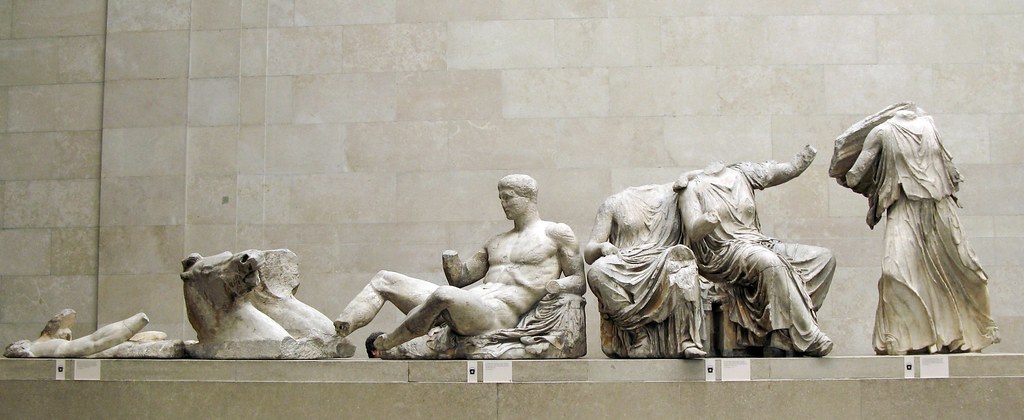It’s Time to Repatriate Historical Artifacts

 by Solaiman Hassanin ‘23
by Solaiman Hassanin ‘23
It’s no secret that many museums worldwide depend on artifacts from other places. For example, the British Museum in London boasts a collection of 8 million different artifacts from nearly all corners of the globe. Two of the museum’s main attractions, the world-famous Parthenon Sculptures and the Rosetta Stone, originate in Ancient Greece and Egypt respectively. For these large museums, there is a simple reason to have such a diverse and, according to some in fact, a looted collection: they have global significance as carriers of history from civilization everywhere, not just their home nation. Yet still, the diversity of these collections raises the issue of repatriation, the act of returning artifacts to their land of origin. Despite the arguments that Museums are doing their duty to preserve history, repatriation is a crucial step in true cultural appreciation and preservation.
The first big flaw in the argument surrounding historic preservation is that it assumes that the lack of repatriation in prominent museums, notably the world-famous British Museum in London, is historically based on preservation. In reality, the British Museum does not have a history of repatriation to anyone; for example, the Parthenon Marbles have been demanded by the Greek Government for quite some time. Despite no threat of destruction in Greece and widespread international pressure, the Museum has retained the Parthenon Marbles as part of its massive collection. Keeping artifacts continues centuries of justifiable mistrust, as assuming that there is a need to “protect” such massive symbols of culture and heritage essentially means that museums see themselves as better protectors of the culture of other lands more than the owners of the land themselves.
The symbolic reality is that artifacts, for all intents and purposes, have become synonymous with a nation’s identity and standing. Artifact repatriation is not just a matter of whether history is safe, it is a fundamental representation of a whole people’s culture, pride, and hope. To return these artifacts is a representation of trust being built between different cultures and nations, a reassurance that the days of cultural supremacy are past history. The last few centuries of colonialism have meant that many of the world’s nations have often not been in complete control of their historical monuments and artifacts, many of whom were studied in the genuine interest of history and many more studied for the entertainment of European societies. It is both a mockery of independence and a nation’s development to continue to peddle the idea that people should not be in charge of their history because it is better in the hands of others. It is also a mockery of modern history to insinuate that Europeans were acting only with pure intentions as the unaware and uneducated others overlooked their own history.
What we should realize is that artifact repatriation is a well-rounded need, it is sewn together with an array of issues. Artifact repatriation is a statement on the moment as much as the past; it reaffirms that the world all agrees that the people today own the land that they live and their ancestors lived in, that there is no mistake in how they developed, and there is no one who knows them more than themselves. Their existence is correct and real, and they should not and do not need to be forced into change.